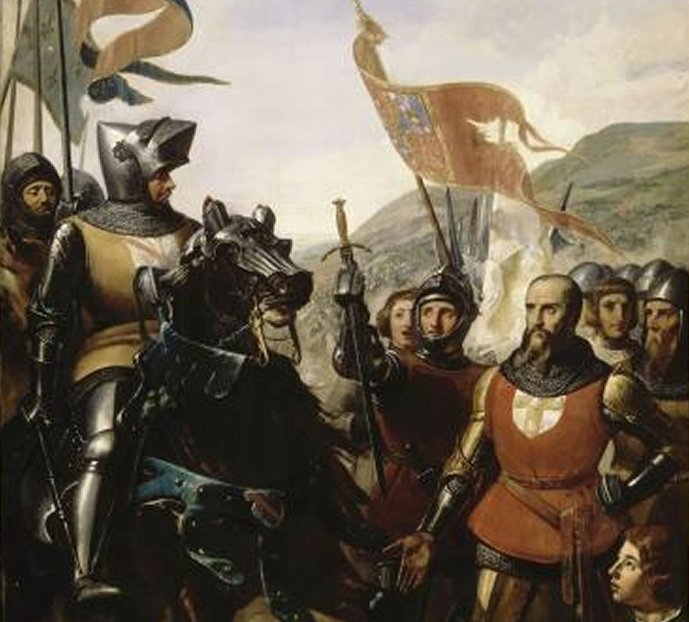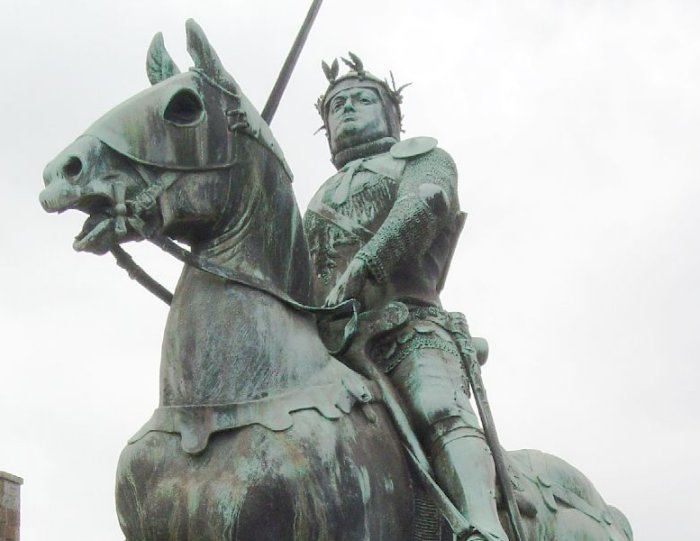Bertrand du Guesclin: ‘Eagle Of Brittany’ Brave, French Commander And His Clash With Sir Thomas Of Canterbury
A. Sutherland - AncientPages.com - Bertrand du Guesclin (c. 1320 – 1380) was the son of a poor knight from Brittany. He was known by nicknames: "The Eagle of Brittany" or "The Black Dog of Brocéliande."
Guesclin at the Battle of Cocherel. Image credit: Charles-Philippe Larivière - CC BY-SA 3.0
Bertrand had not a happy childhood, mainly because he early learned to hate his violent father.
This man wasn't a handsome man. He was far from the kind of man we usually think of as a knight, at least in appearance. Everyone who met him seemed to agree on his unique ugliness. His body was short-grown and square-shaped, and his head was more than usually round. His arms were disproportionately long.
Bertrand And His Trusty Companions In Brocéliande Forest
In the 1340s, the Duchy of Brittany was plagued by a victorious civil war. The old duke's half-brother Charles de Blois, and his niece Jeanne de Penthiévre raved about who could take over.
Jeanne gathered a large group of fighters who would act as guerrilla warriors. Among them was also Bertrand du Guesclin. He bought enough weapons and armor for a smaller group of reliable men by selling his mother's jewels.
Bertrand and his trusty companions hid in the Brocéliande Forest, a legendary enchanted forest that, among medieval Europeans, was imagined as a place of magic and mystery. The forest was believed to be somewhere in Brittany, but its location was never established. Probably the site was only a product of human imagination.
Merlin and Viviane in Brocéliande, Gustave Doré's illustration for Idylls of the King (1868). source
The knight, Bertrand du Guesclin, reminds us of Robin Hood, a legendary heroic outlaw, and a highly skilled archer and swordsman.
Bertrand, however, was an actual historical figure. With his band of fighters, he organized quick and effective attacks, returning safely to his hiding place in the forest.
Bertrand - Military Commander
Bertrand was a Breton knight and an important military commander, who was involved in the Breton War of Succession (1341–1364), Castilian Civil War (1351 - 1369), and the Hundred Years War (1337-1453).
From 1370 to his death, he was Constable of France for King Charles V. King Charles V was particularly impressed with Bertrand's resistance to the English in the siege of Rennes and took him into royal service.
Bertrand was a good and intelligent commander, but not all his military encounters with the enemy succeeded.
He was well known for his Fabian strategy, avoiding regular field battles, harassing the English troops through what is called modern guerrilla warfare, and effectively disrupting supplies of the enemy. He made a famous military career through sheer fighting skills.
He often took part in battles, where the fighting location and time were determined earlier, and won the four in which he held command. Despite many years of military service, Bertrand was dubbed a knight at the unusually high age of 34.
Incident With Sir Thomas Of Canterbury
In 1356, Bertrand was sent to the town of Rennes, which the Duke of Lancaster besieged. The English knight, Sir Thomas of Canterbury, captured Bertrand's little brother during a truce. Such an act was against the rules of war, and Bertrand immediately rode straight into the English camp. When Bertrand entered his tent, Sir Thomas was playing chess with an English knight, Sir John de Chandos. The brave Frenchman challenged Sir Thomas to a sword duel, and the latter didn't protest.
Statue of Bertrand du Guesclin in Dinan. Source
He was convinced that he would defeat this strange-looking intruder. Sir Thomas was wrong.
Bertrand did not add any other life-threatening injuries to his opponent, but he drew attention to his extraordinary sword-fighting skills. During the next half hour, however, he got into so much trouble that he could not go on for several days after this most unfortunate encounter with Bertrand, the knight.
Then he returned home with his abducted brother.
Bertrand was given many assignments, and many of them were victorious. In the Battle of Navarrete in 1367, for example, he was defeated by the Black Prince, a military genius who was a talented warrior. Often captured, then redeemed, Bertrand was known for his boldness and handled well the hostile captivity that he experienced frequently.
In 1380, however, he returned to the French king's service to fight the English but died on July 13. Bertrand du Guesclin was buried, on the command of King Charles V, in Saint-Denis, the burial ground of the French kings.
He was a highly skilled commander whose military capabilities contributed to France's successes, so he deserved an honorable royal burial.
Written by – A. Sutherland - AncientPages.com Senior Staff Writer
Updated on April 29, 2023
Copyright © AncientPages.com All rights reserved. This material may not be published, broadcast, rewritten or redistributed in whole or part without the express written permission of AncientPages.com
Expand for referencesReferences:
David F. Jameson Jameson, The life and times of Bertrand Du Guesclin
More From Ancient Pages
-
 Glorious And Scary Orava Castle – Realms Of Nosferatu And A Historical Landmark Of Slovakia
Featured Stories | Jan 24, 2020
Glorious And Scary Orava Castle – Realms Of Nosferatu And A Historical Landmark Of Slovakia
Featured Stories | Jan 24, 2020 -
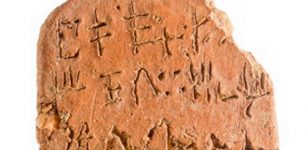 New Clues To Minoan Writing System
Archaeology | Sep 10, 2020
New Clues To Minoan Writing System
Archaeology | Sep 10, 2020 -
 Drought Reveals 2,000-Year-Old Rock Carvings In Brazil’s Amazon
Archaeology | Oct 23, 2023
Drought Reveals 2,000-Year-Old Rock Carvings In Brazil’s Amazon
Archaeology | Oct 23, 2023 -
 Rainbow Was A Powerful Symbol In People’s Ancient Beliefs
Ancient Symbols | Jul 26, 2018
Rainbow Was A Powerful Symbol In People’s Ancient Beliefs
Ancient Symbols | Jul 26, 2018 -
 Hunter-Gatherer Genes Helped Early European Farmers Survive Disease – New Study
Archaeology | Mar 24, 2023
Hunter-Gatherer Genes Helped Early European Farmers Survive Disease – New Study
Archaeology | Mar 24, 2023 -
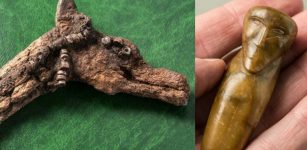 Ancient Doll And Mythical Animal – 4,500-Year-Old Toys Discovered In Siberia
Archaeology | Dec 30, 2017
Ancient Doll And Mythical Animal – 4,500-Year-Old Toys Discovered In Siberia
Archaeology | Dec 30, 2017 -
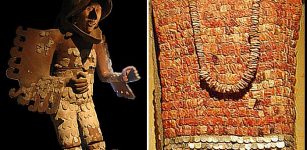 Fearsome Aztec Eagle And Jaguar Warriors Of Mesoamerica
Featured Stories | Sep 14, 2023
Fearsome Aztec Eagle And Jaguar Warriors Of Mesoamerica
Featured Stories | Sep 14, 2023 -
 World’s Oldest Beer Factory Discovered In Abydos, Egypt
Archaeology | Feb 16, 2021
World’s Oldest Beer Factory Discovered In Abydos, Egypt
Archaeology | Feb 16, 2021 -
 Massive 2nd-Century Fountain In Turkey’s Ancient City Of Tripolis Will Be Soon Restored
Archaeology | Aug 3, 2020
Massive 2nd-Century Fountain In Turkey’s Ancient City Of Tripolis Will Be Soon Restored
Archaeology | Aug 3, 2020 -
 3,300-Year-Old Bronze Figurine Of Canaanite God Unearthed At Lost Biblical City
Archaeology | Apr 12, 2020
3,300-Year-Old Bronze Figurine Of Canaanite God Unearthed At Lost Biblical City
Archaeology | Apr 12, 2020 -
 Neolithic Watermelons Reveal Some Surprises About Our Ancestors
Archaeology | Aug 6, 2022
Neolithic Watermelons Reveal Some Surprises About Our Ancestors
Archaeology | Aug 6, 2022 -
 Ancient DNA Reveals Some Northern Europeans Came From Siberia
Archaeology | May 13, 2019
Ancient DNA Reveals Some Northern Europeans Came From Siberia
Archaeology | May 13, 2019 -
 Just 7% Of Our DNA Is Unique To Modern Humans – We Are Not Much Different From The Neanderthals
Archaeology | Jul 27, 2021
Just 7% Of Our DNA Is Unique To Modern Humans – We Are Not Much Different From The Neanderthals
Archaeology | Jul 27, 2021 -
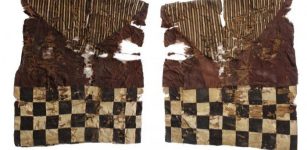 Rare And Well-Preserved Inka Tunic Discovered In Chile
Archaeology | Feb 14, 2023
Rare And Well-Preserved Inka Tunic Discovered In Chile
Archaeology | Feb 14, 2023 -
 Startling Roman-Looking Sandal Discovered Buried Deep Beneath The Snow In Norwegian Mountains
Archaeology | Apr 13, 2022
Startling Roman-Looking Sandal Discovered Buried Deep Beneath The Snow In Norwegian Mountains
Archaeology | Apr 13, 2022 -
 Spectacular Vardzia Cave Monastery – Huge Underground Complex Founded By The ‘Mountain Queen’ Tamar
Featured Stories | Dec 28, 2015
Spectacular Vardzia Cave Monastery – Huge Underground Complex Founded By The ‘Mountain Queen’ Tamar
Featured Stories | Dec 28, 2015 -
 Monks Mound In Ancient Cahokia Was Not What Scientists Previously Thought – New Study
Archaeology | Jul 21, 2022
Monks Mound In Ancient Cahokia Was Not What Scientists Previously Thought – New Study
Archaeology | Jul 21, 2022 -
 Amaru (Katari) – Powerful Inca God Who Controlled Weather Phenomena
Featured Stories | Apr 9, 2024
Amaru (Katari) – Powerful Inca God Who Controlled Weather Phenomena
Featured Stories | Apr 9, 2024 -
 Mystery Of Great Wall Of California: An Ancient Unsolved Enigma
Featured Stories | Oct 28, 2015
Mystery Of Great Wall Of California: An Ancient Unsolved Enigma
Featured Stories | Oct 28, 2015 -
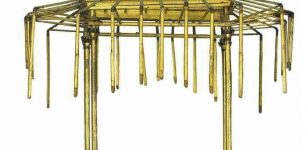 Was Tutankhamun’s Chariot Equipped With Its Own Sunshade?
Archaeology | Jun 27, 2019
Was Tutankhamun’s Chariot Equipped With Its Own Sunshade?
Archaeology | Jun 27, 2019

